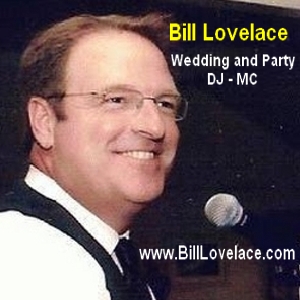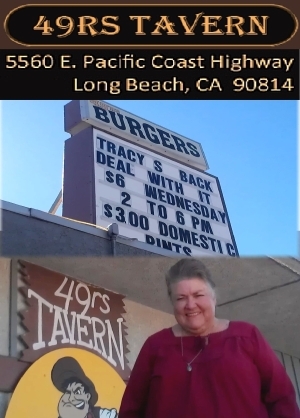[Scroll down for further.]

| (Dec. 31, 2016) -- LBRPEORT.com has learned that the South Coast Air Quality Management District (SCAQMD) recently received a tip that may help solve the mystery of periodic "mystery stinks," area odors that have plagued LB-area residents for years, mainly along shoreline areas but also wafting inland. A senior agency staff member also tells LBREPORT.com that the agency also plans to pursue a suggestion contained in a LBRPEORT.com news report on LB's Dec. 28 downtown area odor that may assist the agency capture the offending air samples, determine their chemical composition, learn what residents are exposed to and help locate the source(s).
[Scroll down for further.] |

|
In a lengthy December 30 conversation with LBREPORT.com, Dr, Cherie ("Cher") Snyder, SCAQMD's Assistant Deputy Executive Officer of Compliance and Enforcement (responsible for overseeing the SCAQMD’s compliance and enforcement operations) indicated that "one of the possible sources, or one of the possible kind of situations that may give rise to these odors involves vessels, basically oil tankers, that are offshore from us, close enough so that if they were to release a pressure valve, that they might in essence be giving off these odors." Dr. Snyder continued: "[O]ne of the things that seems to corroborate this for us, and it's only one data point, is that [one of SCAQMD's inspectors] received a phone call a few weeks ago...notifying [the inspector] that a ship had in fact done that very thing, that there was a pressure-released device that had been deployed and there was an emissions release from the vessel. To my knowledge, that's the only time we've ever actually gotten that kind of report. We don't have jurisdiction over ships when they're deployed offshore. I don't know why it is that they reported to us; I'm glad they did, because that definitely confirms that that is a possible source and we have suspected that that was the case."
Dr. Snyder said SCAQMD is looking into "whether there are other entities besides us that would have more direct jurisdiction over emissions at sea, and particularly involving these pressure-release devices. And the randomness of the events leads us to believe that might actually be a possible source, only because pressure will build up and after a certain point the device goes off so that the vessel doesn't over-pressure...so that seems to kind of fit with the theory." Dr. Snyder added that if there some agency or jurisdictions could require ships to that made such releases to report them to SCAQMD, then at least could correlate these evens with the complaints. If the odors came from oil tankers, what would such emissions likely be? "Tanker ships are going to be carrying crude oil, so it would be vapors coming off the crude oil, which would be VOCs [volatile organic compounds that can include carbon, oxygen, fluorine, chlorine, bromine, sulfur or nitrogen] and possibly various constituents of that" although these would be diluted by distance from the shore and prevailing winds. "Our [human] noses are extremely sensitive and they are more sensitive than any laboratory equipment in terms of being able to detect fairly minute concentrations of various compounds...in some cases our noses detect things that are not really measurable because the concentrations are so small." Dr. Snyder indicated that when SCAQMD has received previous complaints, and correlated these with reported ship locations and wind speed and direction, on more than a couple of occasions "we have found that it would not be inconsistent with what we've observed for the emissions to have come from one of those vessels." And in comparing these data with the recent telephone tip, "sure enough that vessel was pretty close and would have been a possible source of the odors." Dr. Snyder said that depending on what assistance SCAQMD might receive from other agencies that handle offshore matters, if SCAQMD can confirm whether offshore oil tankers might be the source(s) of area odors, "then the next step is figuring out how the odors could be contained or otherwise abated or dissipated."
Dr. Snyder acknowledged that there are also other possible sources of area odors, in some cases perhaps naturally occurring odors affecting Huntington Beach/Seal Beach areas from the OC wetlands, and petroleum sources in the L.A. air basin including oil fields. For this reason, SCAQMD recently began what it calls a surveillance program, basically an information-gathering effort that collects histories of past odor complaints and might help lead to possible odor sources. Dr. Snyder said that after receiving area odor complaints from Long Beach, Seal Beach and Huntington Beach, SCAQMD just began -- on Dec. 27 -- what its surveillance program that was focused on Seal Beach/Huntington Beach areas but in the wake of the Dec. 28 downtown Long Beach area odor, SCAQMD will now be expanding its surveillance program to include Long Beach.
However the surveillance program isn't a real-time air sample collection program (unless an SCAQMD inspector happens to be in the area when an area odor hits.) SCAQMD has inspectors based at its Carson field office mainly focused on nearby refinery issues, but they are deployed elsewhere when available. When downtown LB area residents and workers reported the December 28, 2016 area odor, SCAQMD dispatched inspectors to Long Beach...but as with previous area odors, by the time the inspectors arrived, the odor wasn't detectable...missing another opportunity to collect air samples that could identify the odor's chemical components and uncover its source(s). Accordingly, Dr. Snyder indicated SCAQMD is now pursuing ways to deploy devices -- in Long Beach -- that can capture air samples of the odor in real time. The air capture devices are canisters that aren't automated; they require a human being to operate them. The canisters are under negative pressure; a person opens a valve; air is sucked in; the operator closes the valve and delivers the canister to SCAQMD for analysis. Dr. Snyder roughly estimates more than half a dozen air sample collection devices would be deployed in the Long Beach area...but at present there are no personnel on the ground in Long Beach to capture the air samples. LBREPORT.com noted that at a November 2014 Long Beach community meeting held by SCAQMD to discuss area odors, some residents volunteered to serve as air-sample collectors so we asked Dr. Snyder what became of this. She replied that she's reviewed notes of that meeting and isn't sure exactly what happened to residents' offer but notes that a recent news story suggested LBFD firefighters might be able to collect the air samples for AQMD (since LB firefighters already respond to reports of area odors with meters to measure methane and other chemical components for safety.) LBREPORT.com's news story offered exactly that suggestion...and Dr. Snyder said SCAQMD will now be looking into this possibility although at this point SCAQMD doesn't know [and neither does LBREPORT.com] if LBFD management or LB firefighters will agree to take on this task. Dr. Snyder noted that working with LBFD would require coordination with the City and LBFD and while there's no plan in place to do this right now, "It seems to me that if they're willing to do so...that seems to me to be a fairly reasonable way to go in large part because they're local to the area and I know that they very often also receive complaints and so they would be in a position to be able to take those samples for us and so that seems to me to be probably a good first line of contact."
Dr. Snyder added: "I think we'd want to do a coordinated effort. In our previous experience coordinating with other agencies, it's always a good experience...We're able to leverage our resources in a way that has turned out to be very beneficial, so this is the direction we'd like to pursue." As to a timeline for SCAQMD action on this. Dr. Snyder indicated that exploring this possibility "will happen within the next few weeks" and while SCAQMD hasn't made those connections yet, "it's something we'd like to pursue to see if there's an interest on [LBFD's] part." Dr. Snyder said SCAQMD is grateful that community members would volunteer to take on this task, but indicated her preference is to coordinate with other government bodies in collecting the air samples. So...will 2017 be the year when the mystery of LB's "mystery stinks" is solved? Stay with LBREPORT.com, where we'll continue to follow this story in detail for you as we have in the past. blog comments powered by Disqus Recommend LBREPORT.com to your Facebook friends:
Follow LBReport.com with:
Contact us: mail@LBReport.com |
     
 Hardwood Floor Specialists Call (562) 422-2800 or (714) 836-7050  |